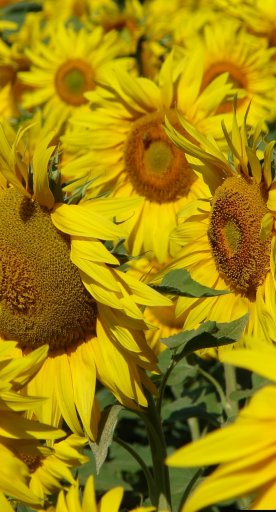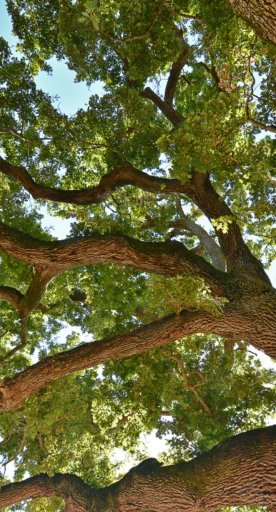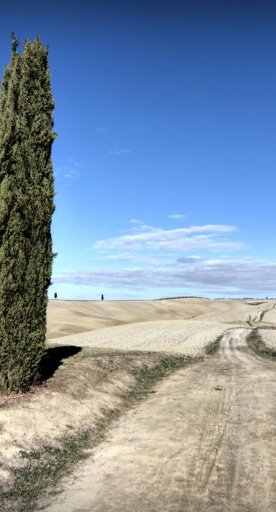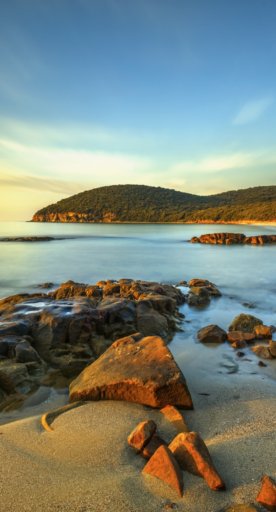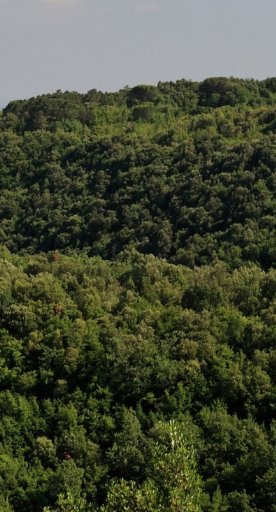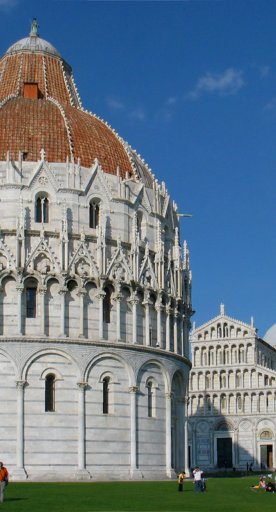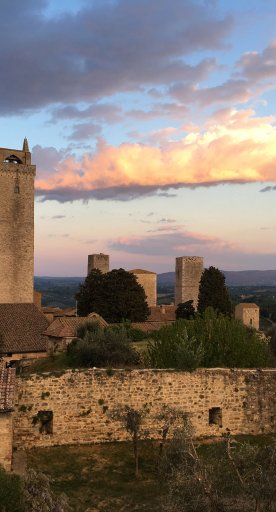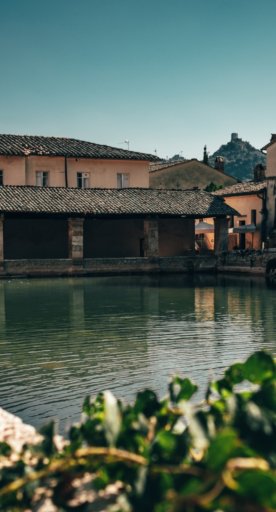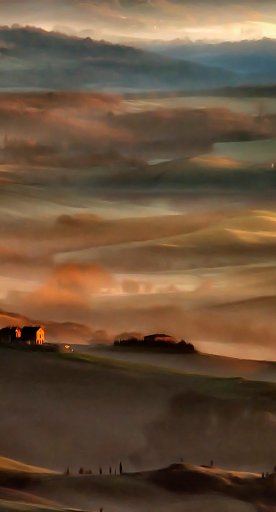
Traveling through the most beautiful villages of the Val d'Orcia
Escape amid picturesque landscapes, rows of cypress trees and places suspended in time
The Val d'Orcia is a treasure chest of nature and unforgettable landscapes that is home to some of the most fascinating historic town centers in the whole of Tuscany. The uniqueness of this territory, declared a UNESCO World Heritage Site, lies in the presence of countless villages, sometimes fortified, of extraordinary beauty: a network of historical, artistic and architectural references that winds through the hills of this iconic place.
What to see in the Val d'Orcia? Here are some places you absolutely must visit.
-
1.Castiglione d'Orcia
-
2.Montalcino
-
3.Pienza
-
4.San Quirico d'Orcia
-
5.Bagno Vignoni
-
6.Radicofani
Castiglione d'Orcia
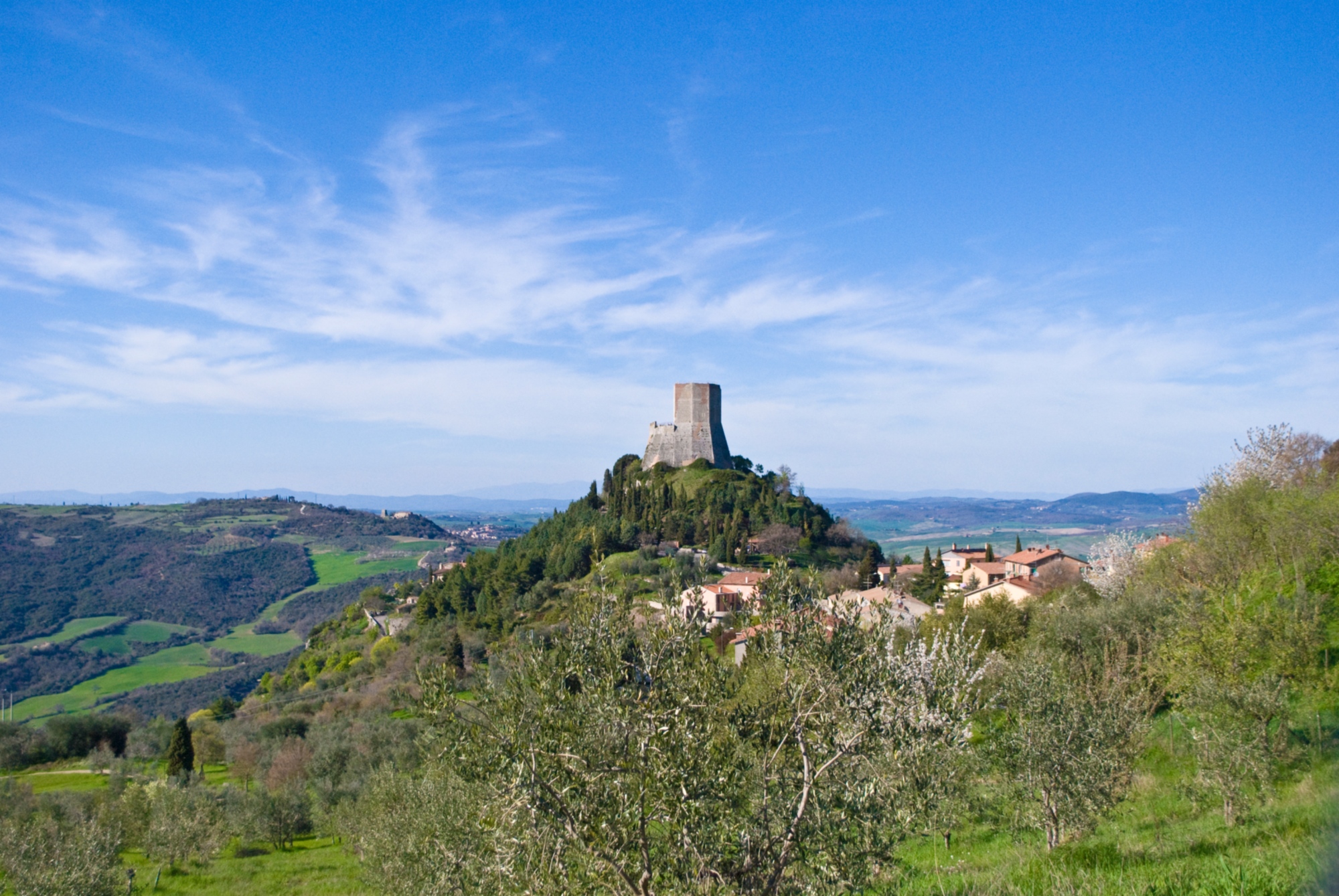
Marking the border between the Val d'Orcia and the forests of Mount Amiata, we find the village of Castiglione d'Orcia. As its name suggests, Castiglione is an ancient castle that developed thanks to its strategic location on the Via Francigena. Its center is Piazza Vecchietta, dedicated to the artist Lorenzo di Pietro, who is said to have been a native of the place. Dominating it are the remains of the Rocca Aldobrandesca, with its imposing closed fence, and the Rocca di Tentennano, built in the 13th century - a great concentration of historical testimonies enclosed in a single village.
Vivo d'Orcia is one of the hamlets of Castiglione, whose core is the Eremo, an ancient Camaldolese monastery. A profound transformation of the place took place in the 16th century with the construction of Palazzo Cervini, planned by Antonio da Sangallo the Younger. Not far from the built-up area, a path among beech and chestnut trees leads to the Sources of the Stream Vivo, near which are scattered remains of factories, interesting testimonies of industrial archeology.
Also worth seeing is Campiglia d'Orcia, which has retained its medieval features with charming alleys, narrow connecting stairways and covered paths. The remains of the Torre di Campigliola are visible nearby.
Montalcino
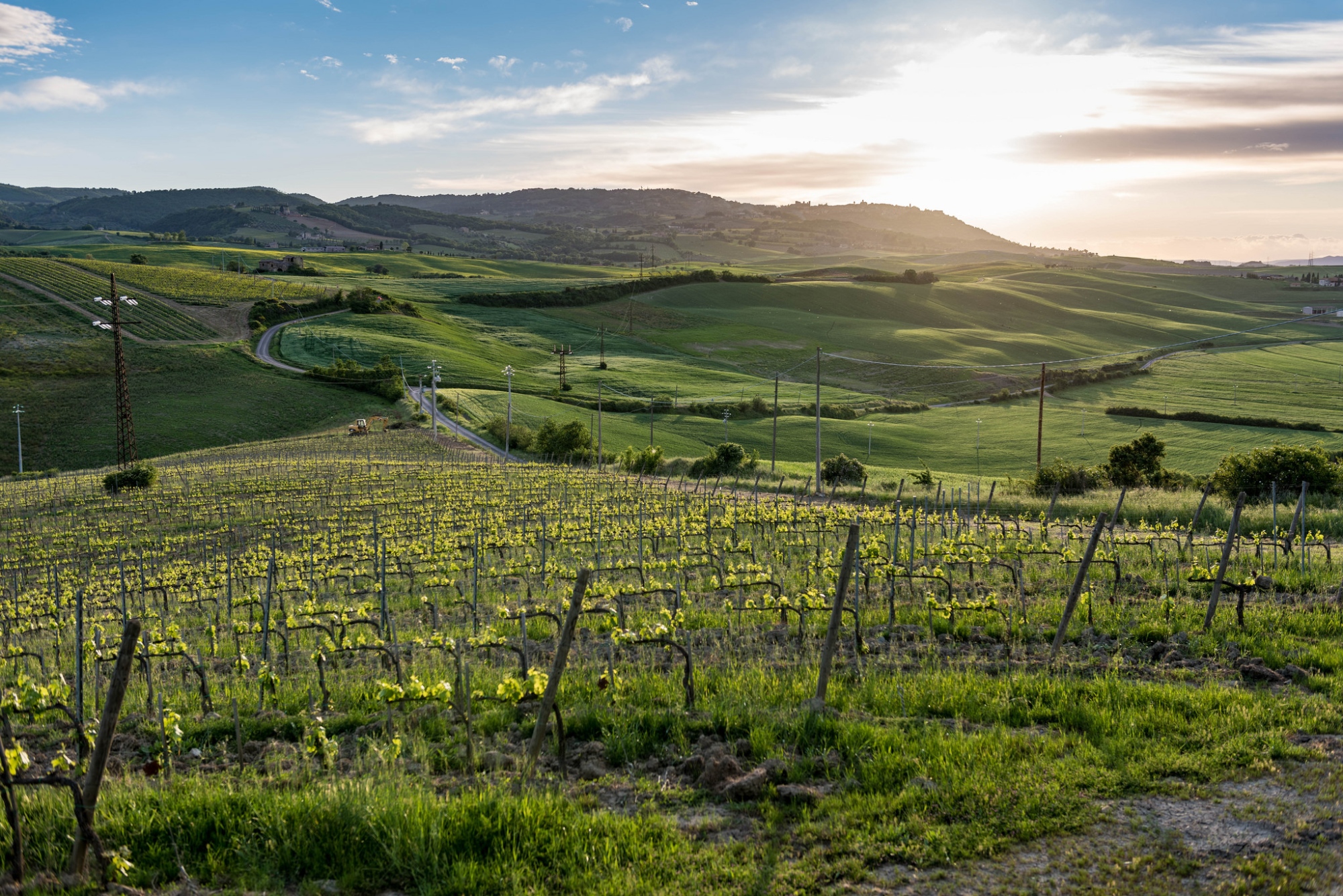
Montalcino, famous for Brunello, also preserves magnificent artistic testimonies: in addition to the mighty 14th-century Fortress with its pentagonal structure, the slender tower of the Palazzo Comunale symbolizes the town. The latter, erected in the 13th century, is adorned with the heraldic coats of arms of the podestà (podestas) who succeeded one another over the centuries.
Once here, a stop in the surrounding countryside is mandatory: winding roads amid beautiful vineyards lead to Torrenieri, Sant'Angelo in Colle and Poggio alle Mura. From Castelnuovo dell'Abate, instead, you reach the solitary Abbey of Sant'Antimo, a masterpiece of the Romanesque style commissioned, according to legend, by Charlemagne.
Pienza

“Nata da un pensiero di amore e da un sogno di bellezza” (Born from a thought of love and a dream of beauty): so wrote Giovanni Pascoli of Pienza, the ideal city, now a UNESCO World Heritage Site. Between 1459 and 1462 Pope Pius II transformed the native town, giving it a new look and having Bernardo Rossellino create all the buildings overlooking the main square: the Cattedrale dell’Assunta (a Renaissance jewel with Gothic elements), Palazzo Piccolomini, the Palazzo Comunale and the Palazzo Vescovile. The city tour will not be complete if you don’t experience its gastronomic specialties, such as pecorino cheese.
Heading south, an up-and-down road among the hills leads to Monticchiello, a charming fortified village of special authentic beauty. Indeed, it still retains its medieval features, which you can see in the fortress, with long sections of the walls, the keep tower and the 13th-century chiesa dei Santi Leonardo e Cristoforo.
San Quirico d'Orcia
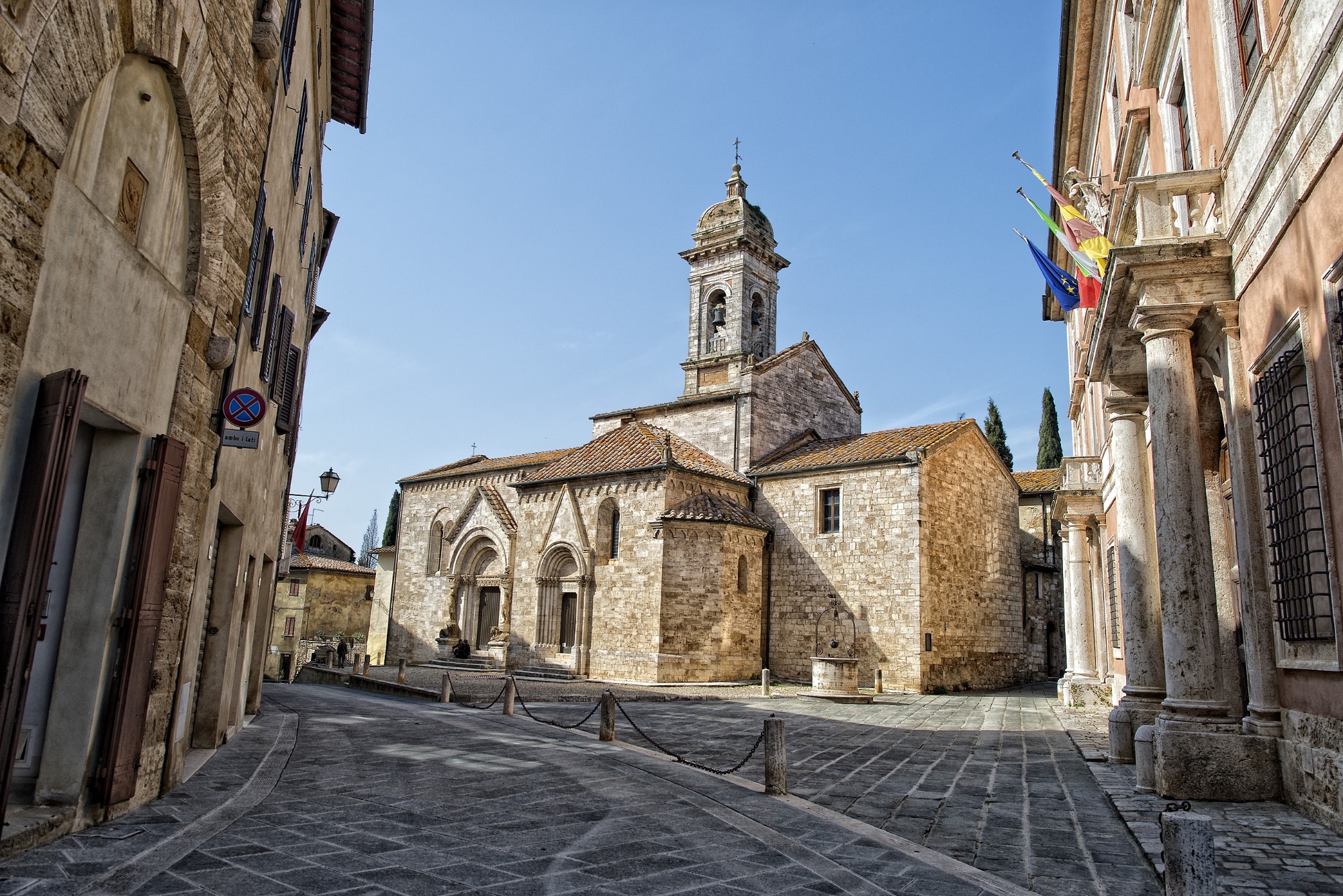
Clinging to a hill, on the remains of the medieval village of Osenna, is San Quirico d'Orcia. Despite its small size, here we can admire a perfectly preserved 12th-century Collegiate Church, the Palazzo Pretorio, and the Horti Leonini, a splendid Italian-style Renaissance garden that hosts the “Forme nel Verde” contemporary sculpture exhibition every year.
If you are looking for a picture-perfect glimpse to photograph, head to the Cappella di Vitaleta (Chapel of Vitaleta): located between Pienza and San Quirico, the small church framed between two rows of cypress trees has become one of the most immortalized corners of Tuscany.
Bagno Vignoni

If some villages we have passed through so far were small, this one becomes even tiny: we are talking about Bagno Vignoni, located on the Cassia. Yet this cluster of houses is home to one of the most unique squares in all of Tuscany, an open-air thermal pool that scenically occupies the historic center. Bagno Vignoni's thermal waters were already appreciated in Roman times and have enjoyed great fame over the centuries among many famous people who stayed here.
On the slope that goes down to the river we find the Parco dei Mulini, interesting testimony of medieval constructions and techniques of water use.
Radicofani

Over the centuries Tuscany has been the land of many characters whose exploits have left their mark. In the 13th century Radicofani became known for Ghino di Tacco, the “gentleman-brigand” who, in 1297, took possession of the Rocca and made it the base for his raids. It is said that his loot was donated to the poor, and the exploits of this “Italian Robin Hood” are also recounted by Dante and Boccaccio.
Today the Fortress houses the Museo del Cassero, which holds artifacts from the area, and which can be visited. You cannot miss the view from the top of the Tower, from which you can see the hills of the Val d'Orcia, the Amiata, the Apennines and the lakes Trasimeno and Bolsena.
What’s nearby?










